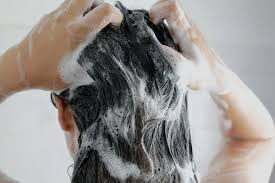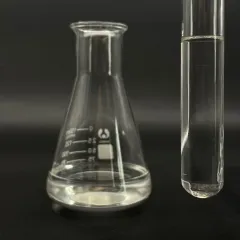If you are looking for high-quality products, please feel free to contact us and send an inquiry, email: brad@ihpa.net
Betaine surfactants
It is created by the reaction of fatty tertiary amines and sodium chloroacetate, consisting of cocoylpropyl betaine, dodecyl betaine, cetyl betaine, and lauroyl propyl betaine. It is milder than the initial three and is currently the major surfactant in child shampoo.
In 1940, the American DuPont Firm created and applied this sort of compound. Like amino acid surfactants, this sort of surfactant has solid detergency and low irritability, and the solution is weakly acidic. Animal experiments have actually confirmed that this type of material is much less hazardous. It is a suitable surfactant.
( surfactants in shampoos)
Amino acid surfactants
Made from a mix of coconut oil and amino acids, it is safe, mild, and non-irritating. The most vital thing is that it is normally weakly acidic and satisfies the pH needs of healthy and balanced skin and hair. It is the suitable surfactant in baby hair shampoo. They are “cocoyl glycine,” “cocoyl glutamate disodium,” etc
From the point of view of chemical residential or commercial properties, its pH worth is in between 5.5 and 6.5, which is weakly acidic and close to the pH worth of human skin. Hence, it is mild and skin-friendly and ideal for all hair types; amino acid surfactants are zwitterionic and quickly soluble in water. It is very easy to rinse clean.
However it additionally has constraints. Amino acid surfactants are a number of to loads of times a lot more pricey than regular surfactants, and a lot of are hair shampoos particularly made for babies and little ones. The disadvantages of amino acid surfactants are that they are not abundant in foam and have weak purification capability.
The phenomenon of solidification and turbidity of surfactants in winter months is generally due to the reduced temperature triggering a few of its components to crystallize or speed up.
(surfactants in shampoos)
What happens if surfactant solidifies and becomes turbid in winter months?
This is a physical phenomenon and does not have a substantial impact on the efficiency of surfactants. In order to address this trouble, the adhering to approaches can be taken:
1. Boost the temperature level: Place the surfactant in a warm setting or boost its temperature by home heating to make sure that the crystallized or sped up parts will gradually liquify and the surfactant will return to a clear state. However, it must be kept in mind that the temperature needs to be stayed clear of when heating to avoid influencing the surfactant’s efficiency.
2. Mixing: For surfactants that have solidified or come to be turbid, they can be recovered to an uniform state by mixing. Stirring can assist taken shape or precipitated active ingredients redisperse into the fluid and boost surfactant quality.
3. Add solvent: In some cases, an appropriate amount of solvent can be contributed to dilute the surfactant, therefore enhancing its coagulation and turbidity. Nevertheless, the included solvent need to work with the surfactant and ought to not impact its usage effect.
Supplier of Surfactant
TRUNNANO is a supplier of surfactant with over 12 years experience in nano-building energy conservation and nanotechnology development. It accepts payment via Credit Card, T/T, West Union and Paypal. Trunnano will ship the goods to customers overseas through FedEx, DHL, by air, or by sea. If you are looking for high-quality SDS Sodium Dodecyl Sulfonate CAS 2386-53-0, please feel free to contact us and send an inquiry.
Inquiry us


